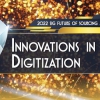Increasing Supplier Trust and Innovation
The tricky question that most if not all companies face on a constant basis is how to get their suppliers fully engaged and committed to – and even be instrumental in driving – innovation.
While the importance of innovation is a given that dates back more than 50 years to the teachings of Peter Drucker in The Practice of Management (1954), it has only been fairly recently that academics and organizations have been studying how to make innovation go from idea to reality.
John W. Henke Jr. and Chun Zhang are two such academics.
Over a six-year period, Henke, a professor of Marketing in the School of Business Administration at Oakland University (Rochester, MI), and Zhang, an assistant professor at the University of Vermont, analyzed the working relationships between 37 companies and their suppliers in five manufacturing and service industries. Their goal was to study supplier innovation behaviour and to learn how companies can encourage suppliers increasingly to invest in innovative technologies, and to share those technologies. This research, which was presented in a paper, "Increasing Supplier-Driven Innovation," for the MIT Sloan Management Review, focused on the North American automotive industry.
The basic question they addressed was this: How can a customer effectively collaborate with a supplier more, while competing with it less in order to increase the supplier’s innovation related activities. And related to that question: Even if there are ways that suppliers might transfer innovation to their customers, how does one get them to do so?
Well, if you have followed my articles for any length of time you know what my next words will be: Trust and forging highly collaborative relationships. “Customer activities that are collaborative tend to build trust and subsequently foster supplier innovation transfer,” Henke and Zhang wrote.
But the problem that can and often does emerge is that there is a “competitive side” to collaboration, and “competitive activities in every customer/supplier relationship that result in distrust, which negatively affects such transfers.”
Take for example a case where a company and its supplier work together to provide a high-quality product –- which strengthens mutual trust –- only to see that trust come under stress when the company asks the supplier for price reductions.
“It is this relational stress and its accompanying distrust that cause suppliers to limit the extent to which they will transfer innovations to the customer.”
So how to reduce or eliminate this “relational stress” and make the leap to high collaboration, trust and innovation? Henke and Zhang identified three areas of collaborative activities, which they call the “Increasing Supplier Innovation Model”, that a company can take to mitigate supplier stress and increase supplier innovation activities:
- Involve suppliers in the company’s processes, especially product development
- Demonstrate openness and share information in a timely manner
- Work with suppliers to help them improve their competitiveness in both cost and quality
In other words, don’t insist on innovation and then browbeat the supplier on costs!
“Trust in the relationship is especially important to the supplier, and that trust must originate with the customer,” say Henke and Zhang. That’s because it is the supplier that is at the greatest risk, especially in taking the initial steps of sharing propriety information, for example.
It works both ways, of course: the company also has to trust the supplier. If the company gains access to proprietary knowledge of one of its competitors through a mutual supplier it will probably be difficult to trust that supplier with its own proprietary information.
I believe Henke and Zhang take a very Vested stance by stressing the importance of win-win collaboration and maximizing alignment with innovative suppliers.







